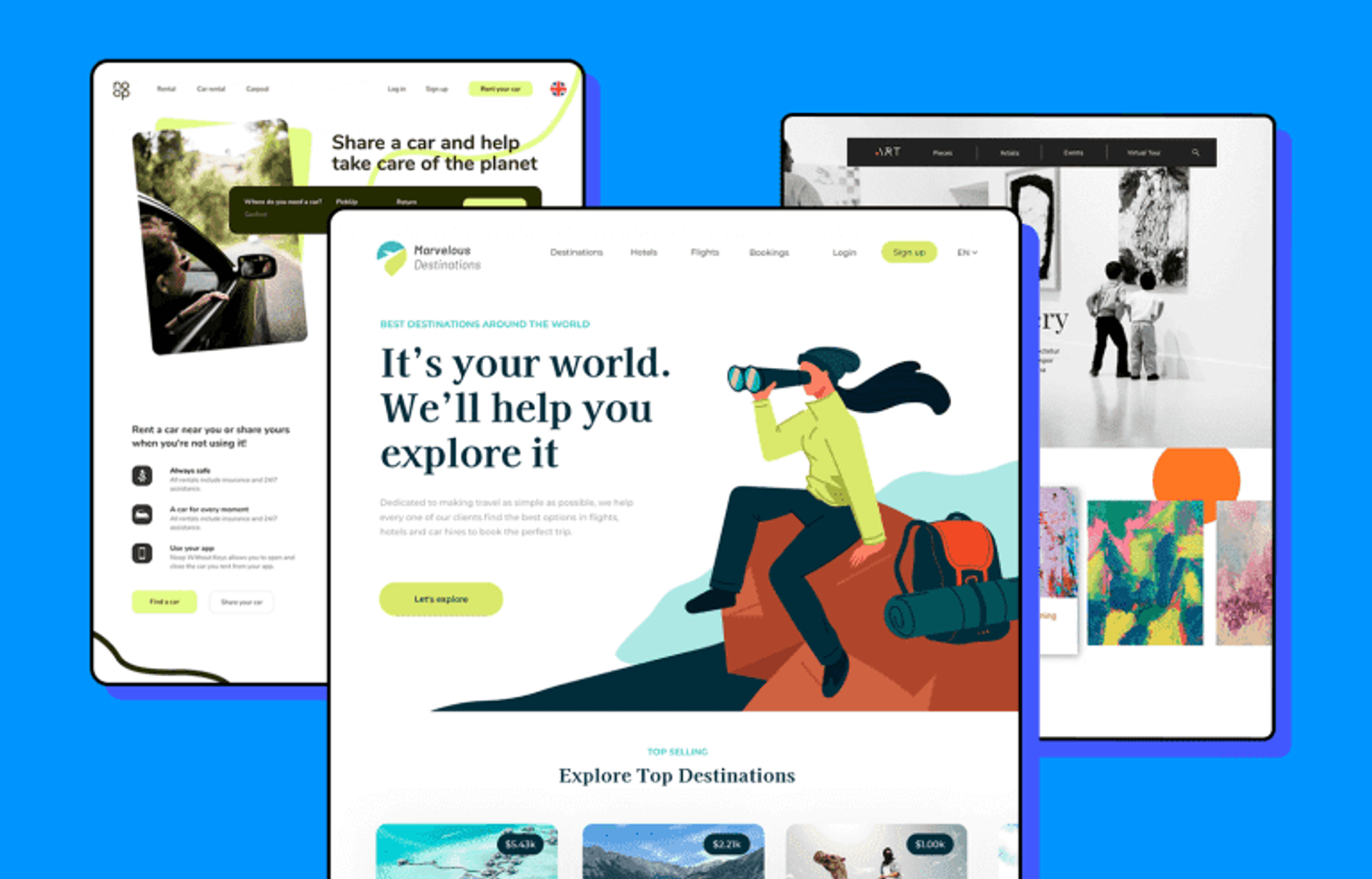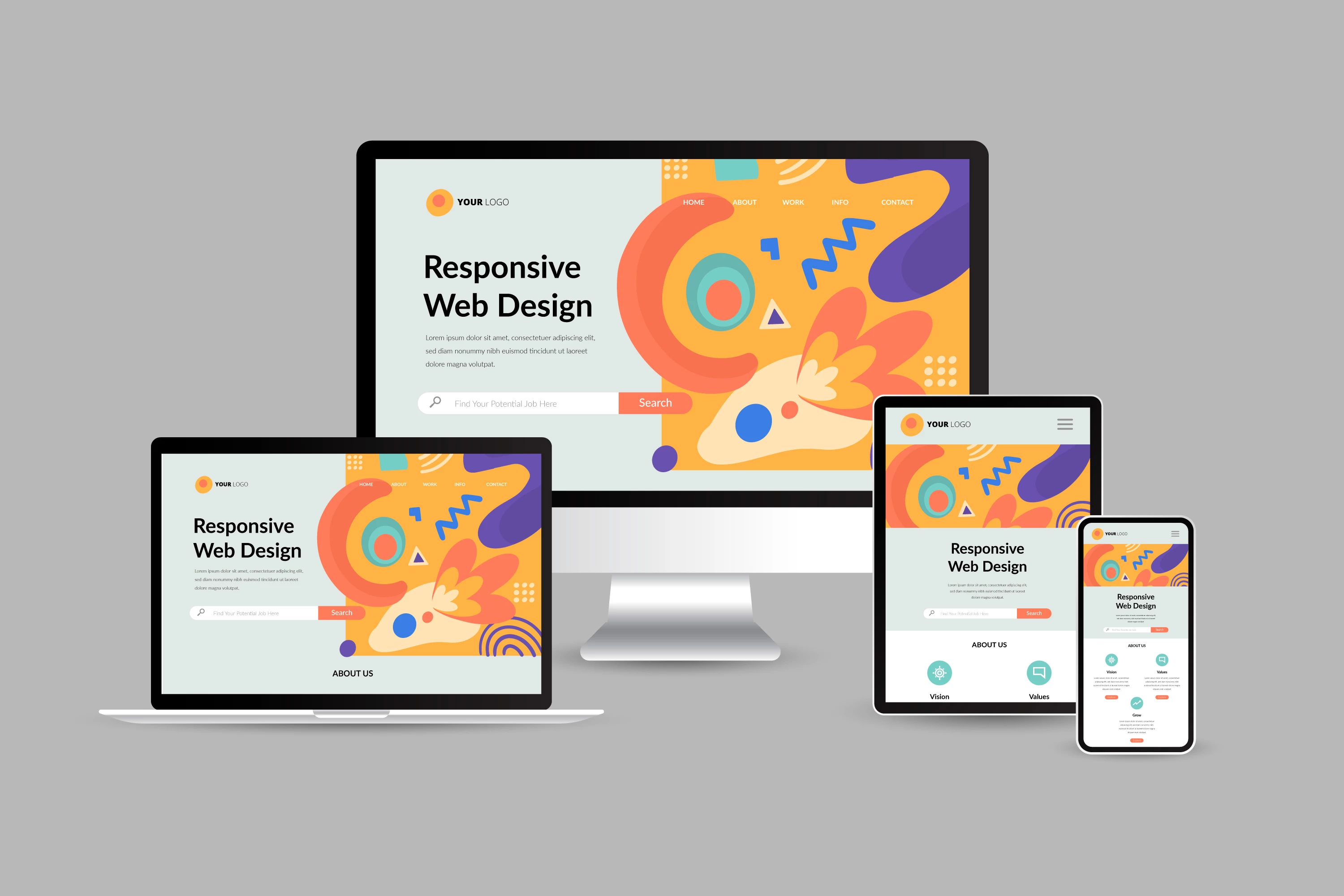Aligned Position Web Design: Creating Custom Websites That Drive Traffic and Increase Conversions
Aligned Position Web Design: Creating Custom Websites That Drive Traffic and Increase Conversions
Blog Article
The Most Effective Kinds Of Web Layout to Improve User Experience and Involvement
In the ever-evolving landscape of electronic interaction, the efficiency of Web layout considerably affects individual experience and interaction. Numerous design techniques, such as minimal, responsive, and interactive designs, each offer one-of-a-kind advantages that can cater to diverse customer demands.
Minimal Website Design
As digital landscapes become increasingly cluttered, minimalist Web layout has actually arised as an effective technique to improving individual experience. This layout philosophy focuses on simpleness, concentrating on necessary components while eliminating unneeded disturbances. By making use of adequate white area, simple navigation, and a restricted color scheme, minimal design fosters quality and routes individual attention to key material.
The core principle of minimalist Web style is to produce a smooth interaction for customers. By lowering cognitive load, customers can quickly understand information without feeling overwhelmed. This direct strategy not only improves use yet likewise encourages involvement, as visitors are more most likely to check out a site that is simple and visually appealing to browse.
Furthermore, minimal style frequently emphasizes typography and images, using these elements purposefully to convey messages properly. This concentrate on vital components can improve brand name identity and produce a memorable individual experience. In essence, minimalist website design is not simply a fad; it is a thoughtful method that recognizes the significance of user-centered layout. By removing additional components, designers can produce a much more interesting, reliable, and delightful Web experience for all customers.
Receptive Web Layout
In today's diverse electronic atmosphere, responsive website design has come to be crucial for creating a seamless individual experience throughout a wide variety of tools. As customers accessibility websites on smartphones, desktops, laptops, and tablets, the ability of a site to adapt its format and web content to various display sizes and resolutions is vital.
Receptive website design utilizes versatile grids, pictures, and CSS media queries to guarantee that Web content is provided optimally, despite the tool made use of. This approach not just enhances the visual appeal of a site however likewise considerably enhances functionality. Users are more probable to involve with a site that uses a constant experience, as it gets rid of the disappointment of having to focus or scroll exceedingly.
By adopting responsive layout, services can enhance their visibility and reach a more comprehensive audience. In summary, receptive Web design is a basic practice that improves customer experience, engagement, and total contentment.
Interactive Web Layout
Responsive Web style lays the foundation for enhancing individual experience, however interactive Web layout takes this a step even more by involving users in a much more vibrant means - Aligned Position Web Design. By incorporating aspects such as animations, clickable prototypes, and real-time comments, interactive website design astounds users, attracting them right into a richer surfing experience
This approach not only promotes interaction but likewise urges customers to discover content actively as opposed to passively eating it. Strategies such as gamification, where users earn rewards for completing jobs, can dramatically boost the moment invested in a website and improve general satisfaction. Moreover, interactive attributes can streamline intricate details, making it more enjoyable and absorbable.

Including interactive design aspects can additionally result in higher conversion prices, as customers are much more most likely to engage with a site that proactively entails them. Aligned Position Web Design. Ultimately, interactive website design transforms individual experiences right into memorable trips, guaranteeing that site visitors return time and again
Apartment Design
Characterized by its minimalistic technique, level layout stresses simpleness and functionality, stripping away unneeded components and concentrating on important functions. This style ideology focuses on usability, making sure that customers can browse user interfaces with convenience and performance. By using a clean aesthetic, flat design eliminates the clutter frequently found in more ornate styles, consequently boosting individual focus on content and functionality.
The trademark of flat design lies in its use bold shades, straightforward typography, and geometric forms. These elements add to a visually enticing user interface that is both approachable and modern. Furthermore, flat layout cultivates a feeling of clearness, permitting customers to determine crucial activities and information without interruption.
Furthermore, level style is particularly reliable in responsive website design, as its simplicity converts well throughout various tools and screen sizes. The lack of elaborate textures and slopes lessens loading times, which is essential for keeping individual engagement. As electronic landscapes remain to develop, level style remains a pertinent choice for developing straightforward websites that improve general experience. By concentrating on crucial functions, level style not only fulfills user requirements but likewise urges seamless communication, making it an important part of effective Web layout techniques.
Adaptive Web Style
Flexible website design blog personalizes the individual experience by developing numerous fixed designs customized to different screen sizes and gadgets. Unlike responsive style, which fluidly readjusts a solitary layout, adaptive design utilizes unique designs for details breakpoints, guaranteeing ideal presentation on different systems. This method allows developers to concentrate on the one-of-a-kind characteristics of each device, enhancing usability by delivering precisely what users need based on their context.
One of the primary advantages of flexible Web style is its capability to optimize load times and efficiency. By offering customized material and pictures that fit the individual's device, websites can minimize information use and enhance loading speeds. This is particularly helpful for customers with slower links or minimal data plans.

Furthermore, flexible style facilitates a much more regulated and consistent branding experience. Since developers develop numerous layouts, they can ensure that the aesthetic components align with the brand name's identification across different systems - Aligned Position Web Design. This results in a cohesive customer experience, enhancing interaction and advertising customer retention
Conclusion
Minimalist layout cultivates quality and emphasis, while responsive layout makes sure flexibility throughout different gadgets, promoting ease of access. Jointly, these design approaches add to the production of straightforward atmospheres that not only enhance contentment yet likewise drive higher conversion prices, emphasizing their important value in contemporary Web style techniques.

Minimal layout fosters clearness and emphasis, while receptive layout ensures versatility across different gadgets, advertising access. Collectively, these design comes close to add to the creation of user-friendly environments that not only improve fulfillment but likewise drive greater conversion rates, underscoring their vital value in contemporary Web design techniques.
Report this page